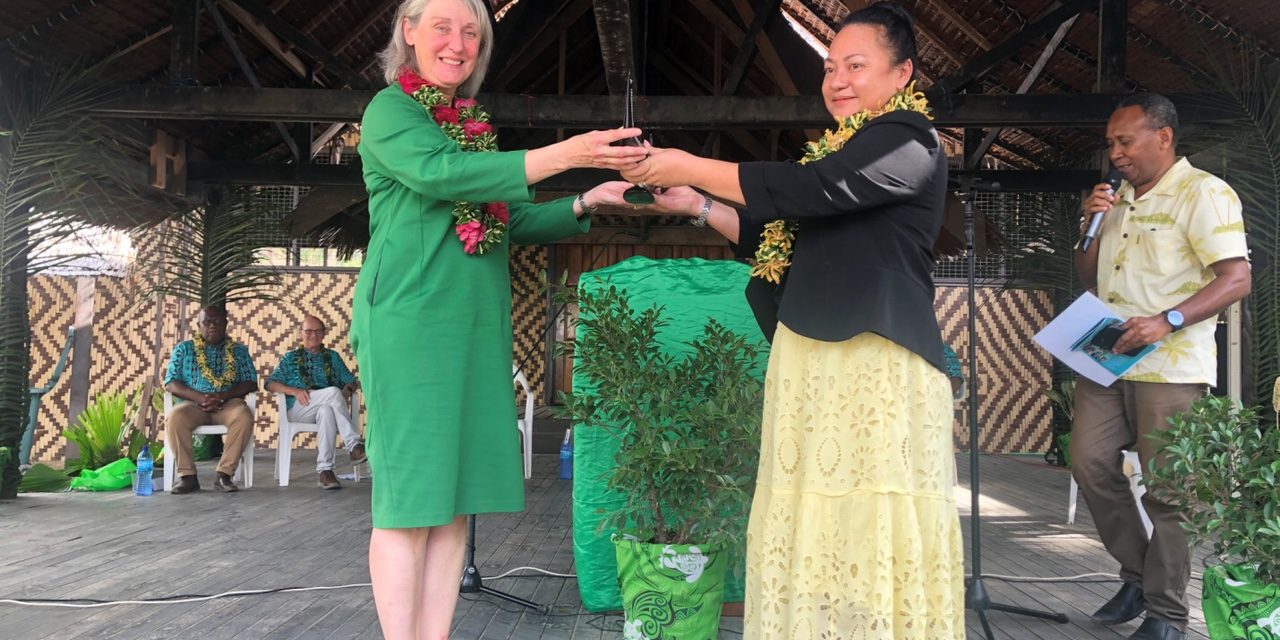A JOINT archaeological research project conducted by the Solomon Islands National Museum and the German Archaeological Institute has unveiled groundbreaking discoveries about early human settlements in the Solomon Islands.
The research project, conducted in 2010, found that people settled in Solomon Islands dating back to 6000 BP (Before Present).
The research was conducted at various sites, including Apunirereha and Ria Cave in East Are’Are, Malaita Province, Marau Sound, and the Weathercoast in Guadalcanal Province (requiring further investigation), and Nggela & Nu’usi (Archaeology sites) in Central Islands Province.

This significant discovery is the result of a 15-year research and archaeological partnership between the Commission for Archaeology of Non-European Culture of the German Archaeological Institute and the Solomon Islands National Museum, supported by the German Ministry of Foreign Affairs and the Ministry of Culture and Tourism.
Her Excellency Beate Grzeski, Ambassador of the Embassy of the Federal Republic of Germany, represented the German people at the research project’s exhibition.
During the official launch of the Archaeology Exhibition titled “Discovering the Past” at the National Museum on Thursday this week.

Minister for Culture and Tourism, Choylin Yim Douglas, highlighted the partnership’s achievements in numerous archaeological projects and studies focusing on lithic tools and prehistoric sites in Malaita, Guadalcanal, and Ngella.
Minister Douglas stated, “The outcomes of this research have been groundbreaking. The fieldwork conducted in East Are’Are provided compelling evidence that early human settlement in the Solomon Islands dates back more than 6000 years BP. This discovery has filled significant prehistoric gaps and enriched our understanding of our early history. The evidence collected has illuminated the complex web of migration and settlement that characterizes the Pacific’s story.”
She also emphasized the cleverness and resourcefulness of the ancestors, as evidenced by the high-quality stone tools crafted thousands of years ago. “These tools tell a story of skill, adaptation, and survival, highlighting our ancestors’ legacy,” she added.

Researcher and archaeologist of Germany Archaeology Institute, Dr. Johannes Moser explained his interest in the prehistory of the Solomon Islands, given its important cultural and archaeological position between Southeast Asia, Australia, and the remote Pacific islands.
“Our excavations on Malaita and surveys in the Nggela Islands, Marau, and the Weathercoast over the past 15 years are part of a larger effort to explore the rich prehistoric history of the Solomon Islands,” Dr. Moser said.
In 2012, Dr. Moser collaborated with Deputy Director of the Solomon Islands National Museum, Lawrence Kiko, to discover Paleolithic sites in the Solomon Islands, potentially dating back 20,000 to 50,000 BP, inspired by similar findings in Bougainville.
The 15-year collaboration yielded significant results, including the discovery of an ancient flint-knapping site at Apunirereha, dated to 8000 BP through radiocarbon dating.
Additionally, an individual female burial at Ria Rock Shelter, dated to 500 BP, provided evidence of early migration from Southeast Asia.
Kiko noted that many prehistoric sites in the Solomon Islands are yet to be excavated, including potential sites at Daighavora Rock Shelter, Nu’usi Island, and Marapa Islands.
Minister Douglas expressed gratitude to all involved in the research. “On behalf of the Ministry of Culture and Tourism, I extend my heartfelt gratitude to the German Ministry of Foreign Affairs and everyone who contributed to this research. Your support and openness have made this endeavor possible and truly meaningful.”
The research documents are available for students and scholars to access.
By LACHLAN SHYVES EDDI
Solomon Star, Honiara









